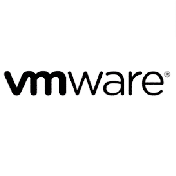Seminarinhalt
This training course covers monitoring, managing and configuring your edge to core network with the HPE Intelligent Management Center Software Platform (HPE IMC). This course starts with a discussion of how HPE Intelligent Management Center is installed, how devices are added through discovery, and then how they can be viewed. The course also goes through configuration management—looking at VLANS in particular— and then explains how HPE Intelligent Management Center is used to manage both firmware and configuration on devices. We also discuss how alarms are received and processed in HPE Intelligent Management Center along with trap management.
Finally, we look at the Virtualization Resource Management (VRM) component against an ESXi host. The lab exercises are focused around Comware, Aruba Edge (AOS) and Aruba CX Switches, and some Cisco. This course is approximately 40 percent lecture and learning activities and 60 percent hands-on lab activities.
Course objectives
After completing this course, you should understand the following:
Finally, we look at the Virtualization Resource Management (VRM) component against an ESXi host. The lab exercises are focused around Comware, Aruba Edge (AOS) and Aruba CX Switches, and some Cisco. This course is approximately 40 percent lecture and learning activities and 60 percent hands-on lab activities.
Course objectives
After completing this course, you should understand the following:
- The HPE IMC installation process and how to initially access HPE IMC
- How to add devices into HPE IMC using auto discovery
- The different views in HPE IMC and how they can be utilized
- The Configuration Centre and how it can be used for configuration management
- How alarms and traps are generated in HPE IMC
- How HPE IMC can be used to manage, monitor and configure VLANs
- How HPE IMC can be used for performance management
- How HPE IMC can be used for virtualization resource management
- How to troubleshoot HPE IMC
Programm
Module 1: HPE Intelligent Management Center Introduction
Module 2: Installation and Initial Access
Module 3: Adding Devices
Module 4: Trap Management
Module 5: View Management
Module 6: Configuration Management
Module 7: Alarms and Events
Module 8: VLAN Management
Module 9: Performance management
Module 10: Virtualization Management
- Introduction
- HPE Intelligent Management Center design
- HPE vLabs access
Module 2: Installation and Initial Access
- Processes on the HPE Intelligent Management Center server
- How to login to HPE Intelligent Management Center
- Licensing structure
- Difference between an HPE Intelligent Management Center operator and an HPE Intelligent Management Center user
- Operator groups and how they can be mapped to operators
- How to install an HPE Intelligent Management Center module
- How to configure display tiling
Module 3: Adding Devices
- How to configure devices before you add into HPE Intelligent Management Center
- How to configure access service templates
- How to use “auto discovery” to add devices to HPE Intelligent Management Center
- How to use “add device” to add devices to HPE Intelligent Management Center
- How to use “check access settings” and interpret the output
- How to install and use DBman
Module 4: Trap Management
- How traps are received and processed by HPE Intelligent Management Center
- How to view and understand traps in HPE Intelligent Management Center
- How traps are filtered in HPE Intelligent Management Center
- How HPE Intelligent Management Center is used to create a trap definition
- How to import MIBS in HPE Intelligent Management Center
- Escalate a trap (event) to an alarm
Module 5: View Management
- Access and manage the network topology
- Access the IP topology view
- Appreciate the difference between the IP view and IP topology view
- Create a custom view
- Create a port group view
- Create a custom view
- Create a data center topology
Module 6: Configuration Management
- How to backup and baseline firmware
- How to backup, baseline, and compare configurations
- How to schedule backups
Module 7: Alarms and Events
- Understand the alarm window information
- How alarms are acknowledged and recovered
- How to edit the home screen
- How to cause an event to become and alarm
Module 8: VLAN Management
- How to manage global and device VLAN information
- Know the steps to deploy a VLAN
Module 9: Performance management
- Describe the types of performance metrics that a network administrator can monitor using HPE Intelligent Management Center
- Analyze the performance characteristics being tracked by HPE Intelligent Management Center
- View, interpret, and configure performance widgets in the HPE Intelligent Management Center home window
- Describe the difference between global index settings and individual device monitoring settings
- Configure individual device monitoring settings
- Use topology maps to access device performance metrics
- Configure topology maps to display specific performance metrics
- Describe the difference between global index data and real time monitoring data
- Configure real time performance data
Module 10: Virtualization Management
- An introduction to virtualization
- Adding virtual hosts to HPE Intelligent Management Center
- Using Virtual Resource Manager (VRM)
- An introduction to managing virtual devices in VRM
Zielgruppen
This course is for network or systems administrators, network engineers, and consultants who plan to deploy, manage, monitor, and configure HPE Intelligent Management Center
Vorkenntnisse
To get the most from this course, we recommend that you have the following experience:
- Understand networking, along with IPv4 addressing
- Have some knowledge of the CLI commands on HPE Aruba Switches (AOS and CX), HPE Comware v7, and Cisco (this knowledge is beneficial, but not required)
- Understand file architecture on HPE Comware and HPE Aruba Networking, including Telnet/SSH and start up and saved configurations
- Understand SNMP configuration
- Understand traps and how they are configured on the switches


